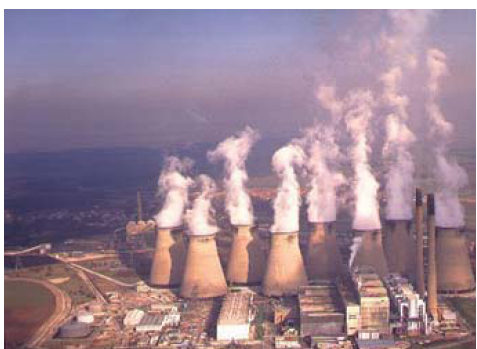Saudi Arabia has seen one of the world’s fastest rates of progress on human development indicators in recent decades. As noted in the 2010 Global Human Development Report, the Kingdom ranked fifth globally in terms of rate of improvement on HDI criteria, and third globally if measured solely by non-income HDI components of per capita access to health and education.
In achieving High Human Development status, the Kingdom has relied heavily on export revenues from its world-leading oil reserves. It currently relies on oil for 80% of public revenues, 45% of GDP, and 90% of export earnings.
But as Saudi Arabia looks to the future, attention is also placed on the need for a development model which goes beyond oil.
Out of approximately 10 million barrels per day that the Kingdom currently produces, about 3 million barrels per day of oil equivalent (mboe) is used within the domestic economy, as the country relies heavily on oil-burning power facilities for electricity generation alongside rising demands from transport and other sectors.
But some project that local demand could grow to as much as 8 mboe per day by 2030, owing to growth of population, urban energy demands and energy-intensive industry. With global oil prices expected to remain relatively high into the future, the potential diversion of oil reserves towards domestic consumption would result in a high opportunity cost through lost export revenue potential, and bringing potential risks to the country’s development model.
Reducing the energy intensity of growth would be one strategic solution, conserving oil for future exports while also reducing carbon emissions and the rising public health toll from sulphur dioxide and nitrogen dioxide emissions.
New policies and measures are now being put in place to expand energy efficiency and renewable energy.
Since 2005, UNDP has partnered with the King Abdul-Aziz City for Science and Technology and lead industry partners like energy-giant Saudi Aramco and the Saudi Basic Industries Corporation (SABIC) to increase end-use energy efficiency in the national economy. A National Energy Efficiency Programme (NEEP) was undertaken in recent years to support reduction of energy intensity in the national economy, with several key results:
(1)Government acceptance of the strategic use of energy efficiency and low-carbon approaches to growth: NEEP has supported the design and launch by 2011 of a new Saudi Energy Efficiency Center to lead overall nation-wide activities on energy conservation across various sectors. The Centre is an independent institution that can support development of nation-wide programmes, mandatory and voluntary. It is also mandated to provide technical advice and recommendations, and to support compliance with national requirements.
(2)Mobilizing public-private partnerships and investments in clean energy solutions: The programme has resulted in broader involvement of industry in key sectors in stimulating the market for energy efficiency with regards mobilizing the country’s energy sector expertise, finance and technologies.
(3)Integrating global best practice into the design of new energy use systems and policies: The cooperation resulted in new energy efficiency policies and measures including new electricity use tariff systems, new efficiency labels and standards for specific energy-intensive appliances like air conditioner, electronics and refrigerators, and new energy efficiency codes for new buildings.
With conclusion of the initial phase of NEEP ($3million; 2005-2011), a second phase ($7million; 2012-2017) has been launched in 2012 focused on developing broader capacities of the new Saudi Energy Efficiency Center (SEEC) for energy conservation goals, through four key results in coming years:
Energy Conservation Law, Strategy and Action Plans: supporting design and passage of the country’s first Energy Conservation Law and energy-efficiency actions plans in key sectors like transport, buildings, petrochemicals, power supply, water supply and consumer appliances like air conditioning and lighting.
Capacity Development for Energy Managers and Leaders: helping the design and implementation of extensive training of trainers programmes for energy manager and leaders from public and private sectors focused on challenges and opportunities in key sectors.
Energy Management Information Systems: helping the design and establishment of a new national energy information system as a data-base on energy supply and demand, forecasting and monitoring/evaluation of targets in key sectors.
Awareness-Raising for Public and Industry: supporting the design and implementation of nation-wide Energy Efficiency Campaign to enhance energy consumption behaviours, particularly energy conservation in residential sector and in high growth energy-intensive industries.
In addition to SEEC, key public and private sector partners to the initiative include the Ministry of Petroleum, Saudi Aramco, the Ministry of Water & Electricity, Saudi Electricity Company and the National Water Company, the Ministry of Commerce and Industry and the Saudi Basic Industries Corporation (Sabic). It also includes partnership with the King Abdullah City for Atomic & Renewable Energy, launched in recent times as a new hub for renewable energy policy and solar power expansion, with the Kingdom hosting the world’s highest levels of solar radiation.
Through UNDPs global network and our extensive work around the world in the area of energy efficiency and renewable energy, the programme also explores south-south partnerships to learn from global best practices and form new partnerships towards a green economy. Today Saudi Arabia stands as the world’s oil capital, but backed by new public investments and public-private partnerships, a new vision is emerging that could well see the Kingdom emerge as a top mover in clean energy solutions in coming years.

 Locations
Locations
